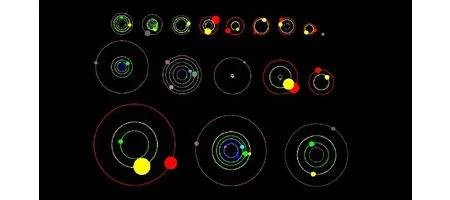There could be many more small planets than previously thought, thanks to the discovery that they don’t need to form around stars rich in heavy elements.

A research team led by Lars A Buchhave, an astrophysicist at the Niels Bohr Institute and the Centre for Star and Planet Formation at the University of Copenhagen, studied the elemental composition of more than 150 stars harboring 226 planet candidates smaller than Neptune. He was looking for elements heavier than hydrogen and helium, which scientists refer to as metals.
“I wanted to investigate whether small planets needed a special environment in order to form, like the giant gas planets, which we know preferentially develop in environments with a high content of heavy elements,” he says.
“This study shows that small planets do not discriminate and form around stars with a wide range of heavy metal content, including stars with only 25 percent of the sun’s metallicity.”
The metallicity of a star mirrors the metal content of the planet-forming disk, and planets like the Earth are composed almost entirely of elements such as iron, oxygen, silicon and magnesium.
Astronomers have hypothesized that large quantities of heavy elements in the disk would lead to more efficient planet formation. It’s long been known, for example, that giant planets with short orbital periods tend to be associated with metal-rich stars.
Unlike gas giants, though, the occurrence of smaller planets doesn’t seem to be strongly dependent on the heavy element content of their host stars. Planets up to four times the size of Earth can apparently form around stars with a wide range of heavy element content, including those with a lower metallicity than the sun.
“The data suggest that small planets may form around stars with a wide range of metallicities – that nature is opportunistic and prolific, finding pathways we might otherwise have thought difficult,” says Kepler mission scientist Natalie Batalha.






